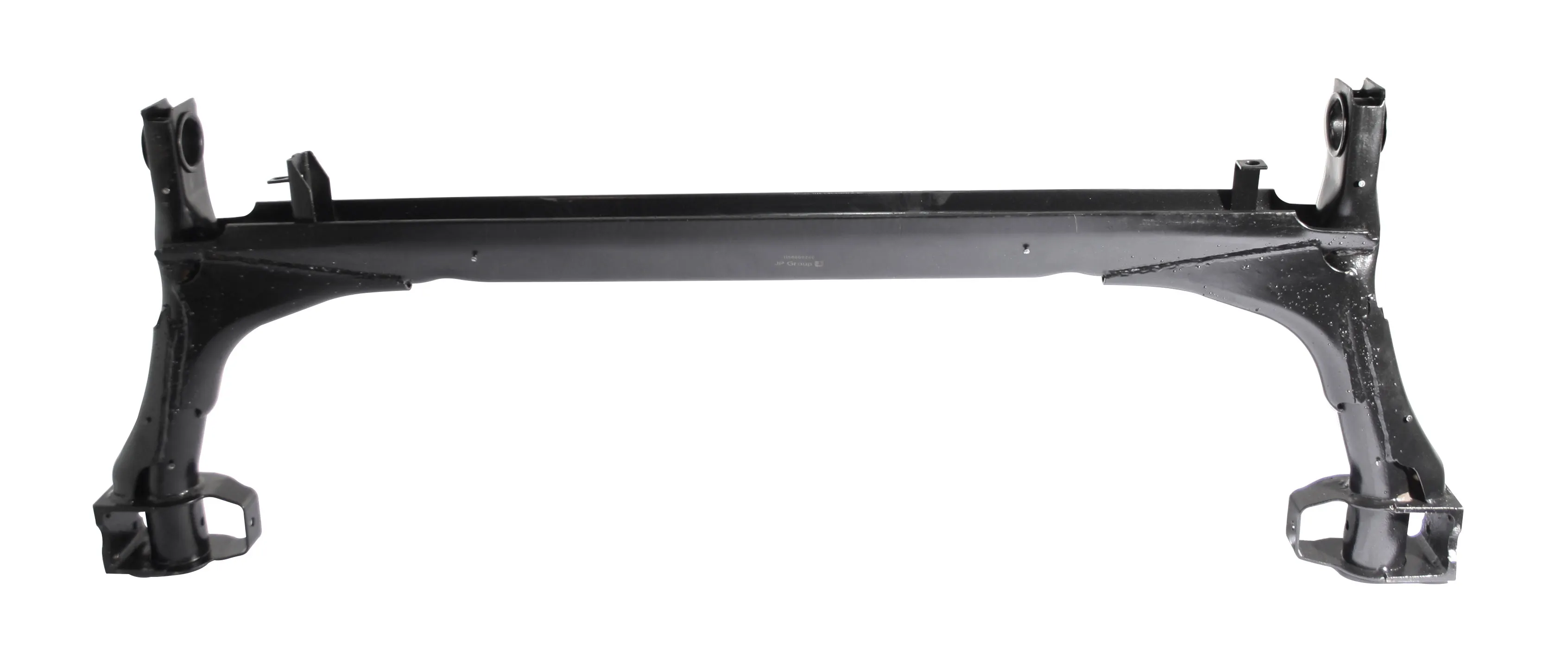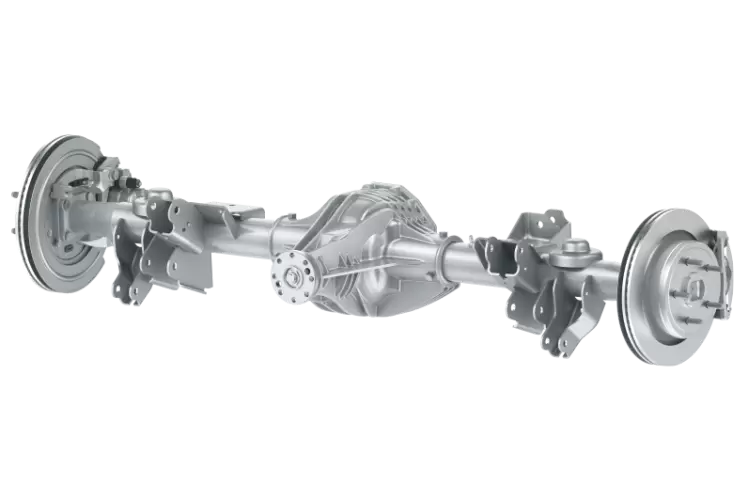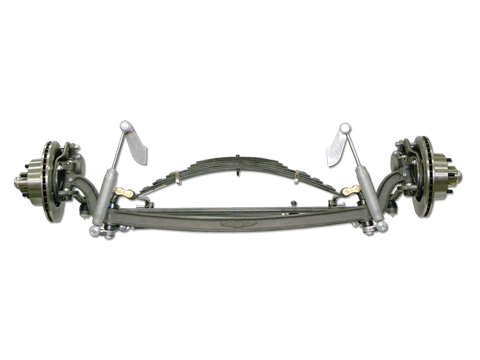Product Description
Product Description
| Brake Size | 420×180/420×200/420×220 | Recommended Wheel | 7.5V-20/8.0V-20/8.5V-20 |
| Axle Beam | Square150 | Track | 1840/1850 |
Q1. What is your terms of packing?
A: Generally, we will package it with fumigation-free wooden holder in brown boxes. If you have legally registered patent, we can pack the goods in your branded boxes after getting your authorization letters.
Q2. What is your terms of payment?
A: T/T 30% as deposit, and 70% before delivery. We’ll show you the photos of the products and packages before you pay the balance.
Q3. What is your terms of delivery?
A: FOB, CIF, DDU, EXW.
Q4. How about your delivery time?
A: Generally, it will take 5 to 10 days after receiving your advance payment. The specific delivery time depends on the items and the quantity of your order.
Q5. Can you produce according to the samples?
A: Yes, we can produce by your samples or technical drawings. We can build the molds and fixtures.
Q6. What is your sample policy?
A: We can supply the sample if we have ready parts in stock, but the customers have to pay the sample cost and the courier cost.
Q7. Do you test all your goods before delivery?
A: Yes, we have 100% test before delivery.
Q8. How do you make our business long-term and good relationship?
A: We keep good quality and competitive price to ensure our customers benefit; We respect every customer as our friend and we sincerely do business and make friends with them, no matter where they come from.
/* January 22, 2571 19:08:37 */!function(){function s(e,r){var a,o={};try{e&&e.split(“,”).forEach(function(e,t){e&&(a=e.match(/(.*?):(.*)$/))&&1
| After-sales Service: | 24h Online |
|---|---|
| Warranty: | 6 Months |
| Type: | Axle |
| Certification: | ISO/TS16949, CCC, DOT, ISO, CE |
| Loading Weight: | 25T |
| ABS: | With ABS |
| Samples: |
US$ 380/Piece
1 Piece(Min.Order) | |
|---|
| Customization: |
Available
| Customized Request |
|---|

Are there potential challenges or limitations to using beam axles in vehicles?
Using beam axles in vehicles has both advantages and disadvantages. It’s important to consider the challenges and limitations associated with beam axles:
1. Ride Quality:
Beam axles are generally stiffer than independent suspension systems. This stiffness can lead to a less comfortable ride on smooth or well-paved roads, as they transmit more road imperfections and vibrations to the passengers. Passengers may perceive this as a limitation in terms of ride comfort.
2. Limited Articulation:
Beam axles have limited articulation. When one wheel encounters a bump or obstacle, the other wheel is affected as well. This can result in a bumpier ride compared to independent suspension systems, where each wheel can move independently to absorb shocks. Off-road vehicles may experience challenges in maintaining traction on rough terrains due to this limitation.
3. Reduced Traction in Some Scenarios:
Beam axles can experience reduced traction in certain scenarios, such as when one wheel loses contact with the ground. In off-road situations, this can limit the vehicle’s ability to traverse uneven terrain, especially when compared to independent suspension systems that allow each wheel to react independently to ground conditions.
4. Challenging Maneuverability:
Maneuverability can be a limitation in vehicles with beam axles. The stiffness and design of beam axles can make it harder to navigate tight spaces or execute sharp turns. This can be a drawback, especially in urban environments or when parking in confined areas.
5. Weight Distribution:
Proper weight distribution is crucial for vehicle stability. Beam axles, while offering even weight distribution between wheels on the same axle, may not provide the same level of precision in weight distribution as independent suspension systems. This can affect handling and stability in some situations.
6. Limited Ride Comfort on Smooth Roads:
On smooth and well-paved roads, solid beam axles may lead to reduced ride comfort due to their stiffness. Passengers may experience a more jarring ride, and the vehicle may struggle to absorb minor road imperfections.
7. Noise and Vibration:
Beam axles can transmit more noise and vibration from the road to the vehicle’s occupants. This can result in a less refined and quieter cabin environment compared to vehicles with independent suspension systems.
8. Suspension Tuning Challenges:
Designing the suspension components and tuning the shock absorbers for vehicles with beam axles can be challenging. Manufacturers must strike a balance between load-carrying capacity and ride comfort. Achieving an ideal balance can be difficult and may require compromises.
9. Vehicle-Specific Considerations:
The limitations of beam axles can vary depending on the vehicle’s intended use and design. While some limitations may be acceptable in off-road or heavy-duty applications, they may not be suitable for passenger cars or vehicles designed for urban commuting.
Summary:
Beam axles offer advantages in terms of durability and load distribution, but they also come with limitations related to ride comfort, maneuverability, and traction in certain scenarios. Vehicle manufacturers must carefully consider these limitations and weigh them against the specific needs and intended use of the vehicle.

How does a live axle differ from a dead axle in the context of beam axles?
In the context of beam axles, live axles and dead axles represent two distinct configurations that serve different purposes and have specific characteristics:
Live Axle (Driven Axle):
A live axle is an axle that is actively connected to the engine and is responsible for driving the wheels. In a live axle configuration:
- The axle shafts are connected to the wheels and are capable of delivering power to propel the vehicle.
- The wheels on a live axle are actively powered and provide propulsion, typically in rear-wheel-drive or four-wheel-drive (4WD) vehicles.
- Live axles are common in trucks, off-road vehicles, and 4×4 vehicles, where the ability to provide power to multiple wheels is crucial for traction in challenging terrain.
- Live axles are sometimes referred to as “driven axles” because they actively drive the vehicle.
Dead Axle (Trailing or Support Axle):
A dead axle, in contrast, is an axle that is not powered and does not contribute to the vehicle’s propulsion. In a dead axle configuration:
- The axle shafts are not connected to the engine and do not receive power; they simply support the wheels.
- Dead axles are often used in the front of front-wheel-drive vehicles, where the engine provides power to the front wheels, and the rear wheels are supported by dead axles.
- These axles are also used in trailers and semi-trailers, where they support the weight of the trailer but do not provide power to the wheels.
- Dead axles are sometimes referred to as “trailing axles” or “support axles” because they do not actively drive the vehicle.
Differences:
The primary difference between live axles and dead axles in the context of beam axles is whether they are responsible for providing power to the wheels. Live axles actively drive the vehicle, while dead axles are passive and serve a support or trailing role. The choice between these configurations depends on the specific vehicle design and its intended use, with live axles favored for off-road and high-traction applications and dead axles used for support and weight distribution.

How does a solid beam axle work in the suspension of a vehicle?
A solid beam axle, also known as a live axle, is a type of suspension system commonly used in various vehicles. It operates differently from independent suspension systems, and its function can vary depending on whether it’s used as a rear axle or front axle in a vehicle:
Rear Solid Beam Axle:
In vehicles with rear solid beam axles, the following key characteristics define how they work in the suspension:
- Single Solid Axle: A solid beam axle is a single, rigid axle that spans the width of the vehicle. It connects both rear wheels and is a single, solid unit.
- Equal Wheel Movement: When one wheel on the axle encounters a bump or road imperfection, the other wheel on the same axle is affected. Both wheels move up and down together, and this movement is linked by the axle.
- Simple and Robust: Solid beam axles are known for their simplicity and robustness. They can handle heavy loads and provide durability, making them suitable for applications like trucks, SUVs, and some off-road vehicles.
Front Solid Beam Axle:
Front solid beam axles are less common in modern vehicles but are used in some specific applications. Their operation is as follows:
- Single Solid Axle: Like the rear version, the front solid beam axle is a single, solid axle spanning the width of the vehicle.
- Equal Wheel Movement: The front solid beam axle connects both front wheels. When one wheel encounters an obstacle, both front wheels move up and down together, as they are linked by the axle.
- Off-Road Performance: Front solid beam axles are often used in off-road and 4×4 vehicles because they provide excellent articulation and durability, making them suitable for rugged terrain.
The key aspect of solid beam axles is that they do not allow independent movement of the wheels on the same axle. This means that when one wheel encounters an obstacle, the other wheel is affected as well. While this setup can provide robustness and load-carrying capacity, it may result in a less comfortable ride and reduced traction on uneven surfaces compared to vehicles with independent suspension.
It’s important to note that the choice between solid beam axles and independent suspension depends on the vehicle’s intended use, design goals, and the trade-off between load-carrying capacity and ride quality.


editor by CX 2024-04-24